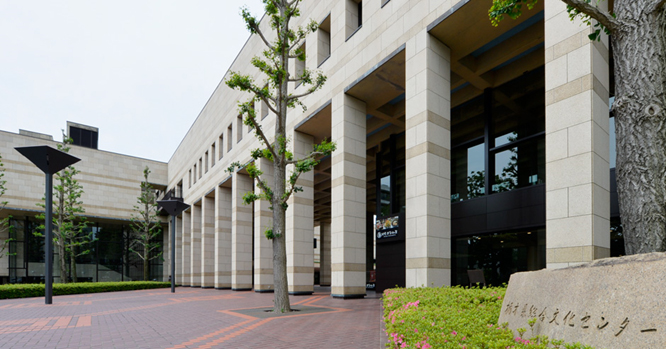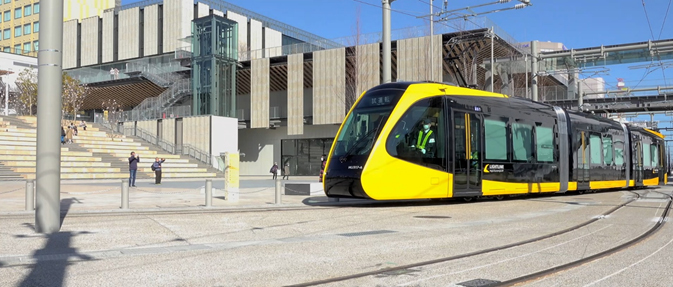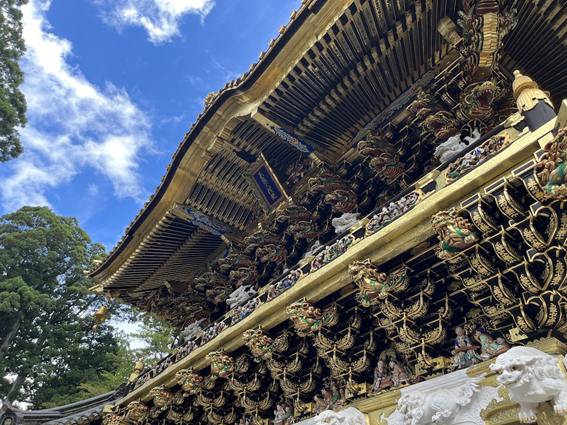Venue
ICST - 2025
1. Conference Venue:
The conference venue is the Tochigi Prefectural Cultural Center (Tochigi-ken Sogo Bunka Center). It is a multi-purpose cultural facility located in Utsunomiya City, Tochigi Prefecture.
Accessibility:
- Train: It's also about a 5-minute taxi ride or a bus ride to "Kencho-mae" bus stop followed by a 3-minute walk from JR Utsunomiya Station West Exit.
- Bus: Get off at "Kencho-mae" or "Tobu-eki-mae" bus stops and walk for about 3 minutes.
- Car: Approximately 30 minutes from the Kanuma Interchange on the Tohoku Expressway. Note that parking is primarily for organizers; public parking is available at nearby paid lots or the Tochigi Prefectural Government underground parking (weekends and holidays).
2. Utsunomiya city:
Utsunomiya City is the prefectural capital of Tochigi Prefecture and its largest city. The city is located approximately 100 km north of Tokyo. The city has good accessibility about 50 minutes by Shinkansen. The city is nationally famous as "Gyoza Town", consistently boasting one of the highest gyoza consumption rates in Japan throughout the year. Besides gyoza, Utsunomiya is also known for its jazz scene, cocktail culture, and as a production center for Oya Stone.
Historically, Utsunomiya Castle is said to have been built by the Heian period warrior Fujiwara no Hidesato. During the medieval period, it flourished as a castle town of the Utsunomiya clan. In the Edo period, it played a crucial role as a post town along the route used by Tokugawa shoguns visiting Nikko Tosho-gu Shrine. The city experienced war damage twice, including the burning down of Utsunomiya Castle during the Boshin War. The quarrying of Oya Stone has a long history in the region and is deeply rooted in the local landscape and culture.
Utsunomiya boasts a unique cultural landscape :
- Gyoza Culture: It is said that the taste of gyoza spread after World War II, brought back by soldiers returning from China. Today, there are over 300 gyoza restaurants, each offering their unique varieties.
- Jazz and Cocktails: The city has produced many jazz musicians who are active both domestically and internationally, earning it the nickname "Jazz Town." Additionally, it is renowned as a "Cocktail Town" with many top-level bartenders.
- Oya Stone Culture: Oya Stone, a local specialty, is used in construction materials and arts and crafts. The former Oya Stone quarry is open to the public as the "Oya History Museum," offering a glimpse into a mysterious underground space. Furthermore, Oya-ji Temple houses the Oya Kannon, Japan's oldest stone Buddha.
- Futaarayama Shrine: With a history of approximately 1600 years, this shrine is a symbol of Utsunomiya and beloved by its citizens.
- Traditional Crafts: In the rural areas, traditional cultures such as tendana (ornately carved shelves) and yatai (festival floats) used in festivals remain.
Notable local specialties and products include:
- Utsunomiya Gyoza: Characterized by their thin skin and vegetable-rich filling, they are enjoyed in various forms such as pan-fried, boiled, and deep-fried.
- Utsunomiya Yakisoba: A unique stir-fried noodle dish made with thick noodles steamed in a soy sauce-based broth.
- Kabuto-age: Deep-fried half a chicken, named for its resemblance to a samurai helmet (kabuto).
- Oya Stone: Used not only for construction but also for decorative items and storage.
- Strawberries: Tochigi Prefecture is the top strawberry producer in Japan, and delicious strawberries are also cultivated in Utsunomiya City.
Utsunomiya City is an attractive city with delicious gyoza, abundant nature, rich history, and unique culture. Its convenient access from Tokyo makes it a noteworthy destination for tourism and business.
3. Nikko Tosho-gu Shrine:
Nikko Tosho-gu Shrine is a UNESCO World Heritage site located in Nikko, Tochigi Prefecture, not far from where we are in Utsunomiya. It is one of Japan's most lavishly decorated and historically significant shrines. The shrine is the final resting place of Tokugawa Ieyasu, the founder and first shogun of the Tokugawa shogunate, which ruled Japan for over 250 years until the Meiji Restoration in 1868. Originally a relatively simple mausoleum, it was significantly expanded and elaborately embellished by his grandson, Tokugawa Iemitsu, in the 17th century. Nikko Tosho-gu is renowned for its stunning architecture, intricate wood carvings, and vibrant colors. The structures showcase a unique blend of Shinto and Buddhist architectural styles, reflecting the religious syncretism prevalent in Japan during that era.
Some of its most famous features include:
- Yomeimon Gate: Also known as the "Gate of Sunlight," this is perhaps the most iconic structure of the shrine. It is adorned with hundreds of meticulously detailed carvings of mythical creatures, legendary figures, and auspicious symbols. It's said that one could gaze upon it all day and never see the same detail twice.
- Five-Story Pagoda: Standing prominently at the entrance, this pagoda was originally donated in 1650 but was later rebuilt after a fire. Each of its five stories represents the five elements: earth, water, fire, wind, and void.
- Sacred Stable (Shinkyusha): This humble stable for the shrine's sacred white horse is famous for its carvings, particularly the "Three Wise Monkeys" depicting the proverb "see no evil, hear no evil, speak no evil."
- Sleeping Cat (Nemuri-neko): A small but significant carving located above the doorway leading to Ieyasu's tomb. While seemingly depicting a peacefully sleeping cat, it is believed to symbolize peace and also to be a hidden protector, ready to pounce at any threat.
- Okusha: The innermost sanctuary, located at the top of a long flight of stairs through a serene forest, houses Tokugawa Ieyasu's tomb.
Beyond its architectural beauty, Nikko Tosho-gu is a place of deep historical and cultural significance, offering insights into Japan's feudal past and the power and influence of the Tokugawa shogunate. It attracts millions of visitors each year, both domestic and international, who come to admire its splendor and pay their respects. Being in Utsunomiya, Nikko is easily accessible and makes for a worthwhile day trip to experience this incredible cultural treasure.
4. Nikko:
The natural beauty of Nikko is equally captivating. Kegon Falls (Kegon no Taki) is one of Japan's three most famous waterfalls, cascading dramatically down from Lake Chuzenji. Lake Chuzenji (Chuzenji-ko) itself is a scenic lake formed by a volcanic eruption, offering boat rides and beautiful views of the surrounding mountains, especially during the autumn foliage season. The Irohazaka Winding Road, a series of hairpin turns leading up to the highlands, is also famous for its autumn colors and is popular among drivers and photographers.
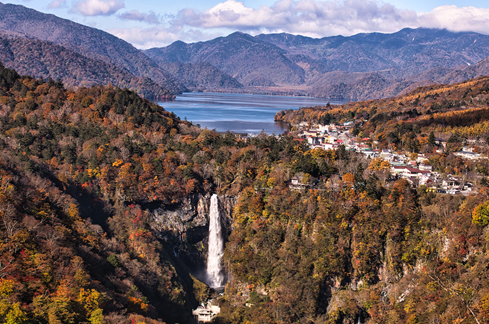
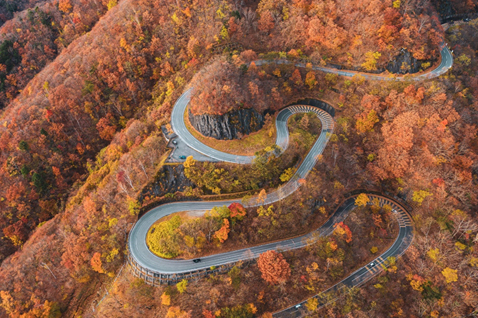
5. Gyoza:
Utsunomiya Gyoza is a regional variation of the Japanese dumpling, gyoza, and it's what makes Utsunomiya nationally famous as "Gyoza Town." These dumplings are a beloved local dish with a distinct character.
What sets Utsunomiya gyoza apart often lies in the filling. While recipes vary from restaurant to restaurant (and there are hundreds of gyoza shops here!), they generally feature a generous amount of vegetables, particularly cabbage, nira (garlic chives), and onions, along with ground pork. This emphasis on vegetables gives Utsunomiya gyoza a lighter and often sweeter flavor compared to some other regional gyoza. Garlic and ginger are also common ingredients, adding to the savory notes. The skin of Utsunomiya gyoza is typically thin and crispy when pan-fried (yaki-gyoza), which is the most popular way to enjoy them. However, you can also find them served boiled (sui-gyoza) or deep-fried (age-gyoza) in many establishments.
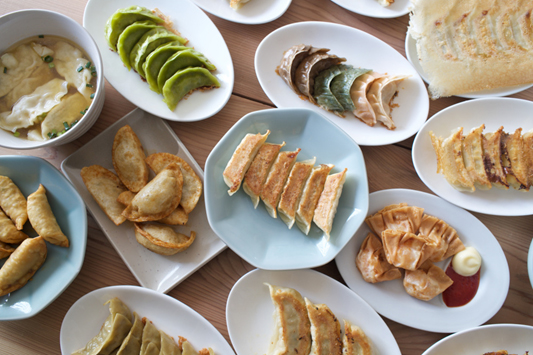
The history of Utsunomiya's gyoza culture is said to date back to the end of World War II, when Japanese soldiers returning from China brought the recipe and taste of dumplings with them. Over time, the dish was adapted to local preferences and ingredients, leading to the unique style we know today. Here in Utsunomiya, gyoza isn't just food; it's a part of the local identity. You'll find gyoza-themed souvenirs, events, and even statues around the city. Many residents have their favorite gyoza shops, and trying different varieties is a popular pastime for both locals and visitors.
Some popular styles of Utsunomiya gyoza you might encounter include:
- Yaki-gyoza: Pan-fried gyoza, the most common and iconic form. The bottom is crispy and golden brown, while the rest of the dumpling is tender and juicy.
- Sui-gyoza: Boiled gyoza, often served in a light broth. This preparation highlights the flavor of the filling and the texture of the ski.
- Age-gyoza:Deep-fried gyoza, offering a crispy and crunchy texture throughout.
